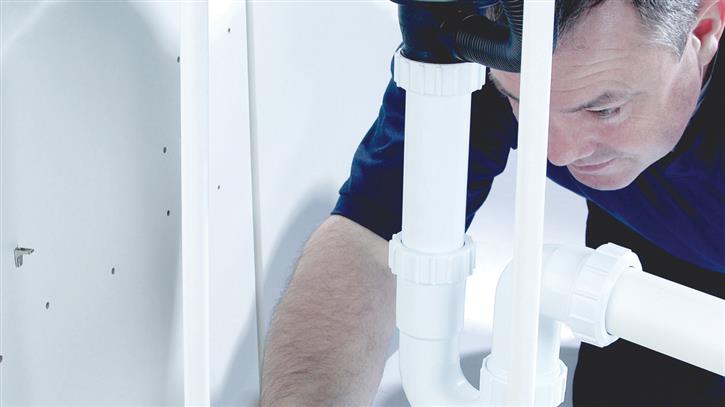


Space is at an all-time premium in our homes, yet we are packing more and more into our kitchens. Toby Howard-Willis, Technical Engineer at JG Speedfit, discusses how push-fit can alleviate installation nightmares for plumbers in kitchens with tight spaces.
Unless you’ve been hiding under a rock, it’s probably no secret that we’re facing challenges with housing in the UK. According to an article in The Guardian in 2017, the UK’s newbuild house sizes were the smallest in Europe, averaging just 76m2. In turn, claims are being made that families are squeezing into properties that do not allow them to live comfortably.
The question is, if house sizes are getting smaller and smaller, how are plumbing and heating installers faring in the kitchen, the heart of the home? Not well, you might think.
Just like homeowners, installers have to squeeze more into the kitchen. Dishwashers, washing machines, American fridge freezers, boiling hot water taps, water filtration systems, sinks, taps, outside taps, and boilers; all need to be plumbed in tiny cupboards and under the sink.
However, it’s not all doom and gloom for installers when facing a kitchen installation. Push-fit solutions can overcome many issues that tight spaces throw up. Although smaller kitchens are becoming the norm, installers can still carry out their work in a safe and timely manner while still maintaining a high standard.
One of the biggest ongoing challenges of kitchen plumbing is soldering copper pipes – installers should avoid blowtorches and solders in cupboards at all costs in order to prevent fire hazards. The wellbeing of the installer is also at risk due to fumes and scalding.
Any approach that allows pipework to be assembled without a blowtorch offers a real advantage in terms of safety. Push-fit solutions allow installers to create a reliable and leak-proof connection by simply pushing the pipe into the fitting. To strengthen the integrity of the connections, fittings made by JG Speedfit come with a twist and lock mechanism to offer an additional layer of protection against leaks.
Smaller spaces also mean installers must themselves bend and twist into awkward positions. This can cause aches, sprains, pains, and long-term health conditions. Visibility can also be poor in these places, thus meaning the final second fix connection could sometimes be tricky.
For example, when a plumber is connecting the tap to a kitchen sink, accessing the service valve may well be easy enough, but the final connection that goes into the tap itself will be done blind.
Flexi hoses do away with these fiddly connections. Manufactured in white PVC or braided metal, they easily bend to make the connections, meaning installers spend less time in awkward positions. With over 50 variations of pipe size and thread patterns, they can make a plumber’s life a lot easier, and installation up to 40% faster.
The age-old saying is time is money. For plumbers, no truer a word has ever been spoken, as they need to complete their work within the timeframes they’ve quoted for to realise the full profit of the job.
However, with kitchens, the pipework tends to be mapped out by an architect. These plans, like all plans, can be subject to last minute changes.
In such cases, it’s important that amendments can be accommodated without creating extra work for the installer and delaying the job. This is where soldered pipework really falls short. If joints have already been created, it is very tedious to disconnect and re-install the pipework, and this can also result in product wastage.
With push-fit solutions though, installers can demount the fittings in no time without using additional tools and reuse them if needed. Also, by using flexible pipes, LLDPE pipes for water filtration, flexi hoses and push-fit fittings, appliance taps and valves, any alterations can easily be accommodated.
With more and more pipework to fit underneath our sinks, it’s quite clear that we need to be clever with the space we have available to us. Despite this, many installers use a separate valve and connector to allow for water isolation when servicing or repairs are needed. Not only does this take up the room we don’t have, but it also increases the complexity of the installation and takes much longer to complete.
If you'd like to keep up-to-date with the latest developments in the heating and plumbing industry, why not subscribe to our weekly newsletters? Just click the button below and you can ensure all the latest industry news and new product information lands in your inbox every week.